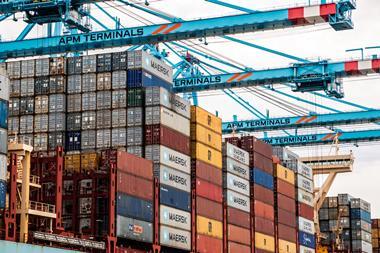In the worst-case scenario of the ‘Fit-for-55’ stress test conducted by the three European financial regulators – European Banking Authority (EBA), European Securities and Markets Authority (ESMA) and European Insurance and Occupational Pensions Authority (EIOPA) – and the European Central Bank (ECB), pension funds suffered losses of 21.5%. These are considerably higher than losses for banks, insurers and investment funds.

The three European Supervisory Authorities (ESAs) and the ECB together assessed the impact of three transition scenarios incorporating the implementation of the ‘Fit-for-55’ package, relating to the European Union’s goal to achieve an emissions’ reduction of 55% by 2030, two of which are characterised as ‘adverse’.
Under the first adverse scenario, transition risks materialise in the form of what the ESAs call ‘run-on-brown’ shocks, whereby investors shed assets of carbon-intensive firms.
This scenario results in limited losses for financial institutions, with pension funds suffering returns of -6.4%. This is more than double the loss in the standard scenario, with negative returns predominantly down to funds’ investments in carbon-intensive companies.
“The sudden shift in the perception of climate risk under the first adverse scenario and the subsequent ‘run on brown’ scenario more than doubles the impact compared to the starting point,” according to the ESAs.
At €113bn, these losses “remain manageable”, according to the regulators. Indeed, the projected losses are comparable to 2022, when European pension funds’ assets decreased by 6.8% according to that year’s IPE Top 1000 report.
However, in the second adverse scenario, where the ‘run-on-brown’ shocks are amplified with “other standard macro-financial stress factors,” the negative impact for pension funds more than triples to combined losses of 21.5%.
The sharp surge in losses can be explained by a strong increase in swap rates and credit spreads in this second adverse scenario that leads to significant decreases in market value, especially on corporate and sovereign bonds, which account for about half of both insurers’ and pension funds’ investments.
Sovereign bonds
Pension funds’ sovereign bond holdings alone account for 40% of the losses, as they are “by far the most impacted asset type under the second adverse scenario”. Market values of sovereign bonds decrease by almost 30% for insurers and by 33% for pension funds, which are impacted more because of their relatively high duration.
Impacts on pension benefits will likely be much smaller, however, as interest rate rises also result in a significant reduction in liabilities for pension funds.
“This suggests that only assessing the impact of the scenarios on the asset side of the two sectors provides a more conservative picture leading to an overestimation of the potential losses,” the ESAs noted.
The latest digital edition of IPE’s magazine is now available





































No comments yet